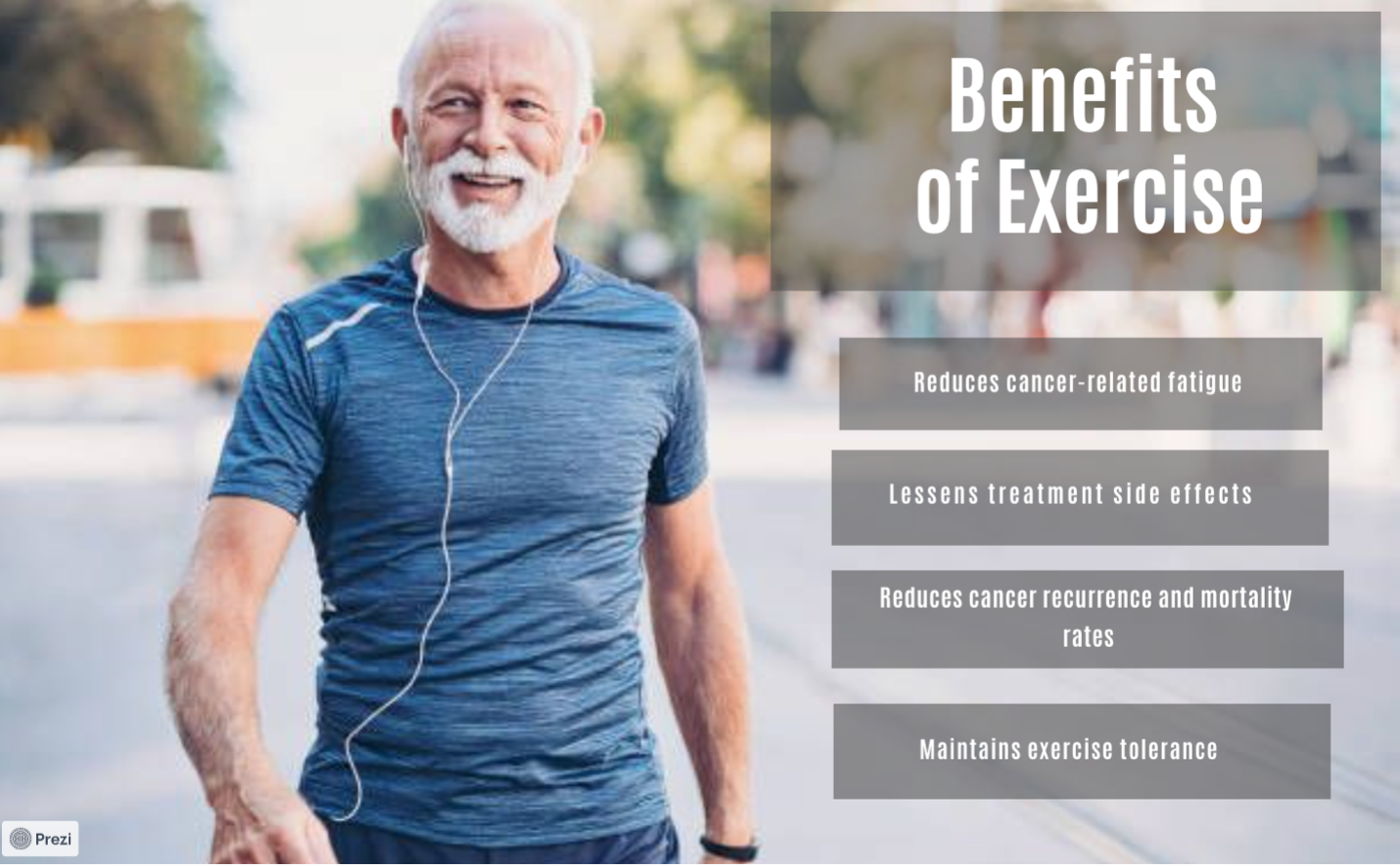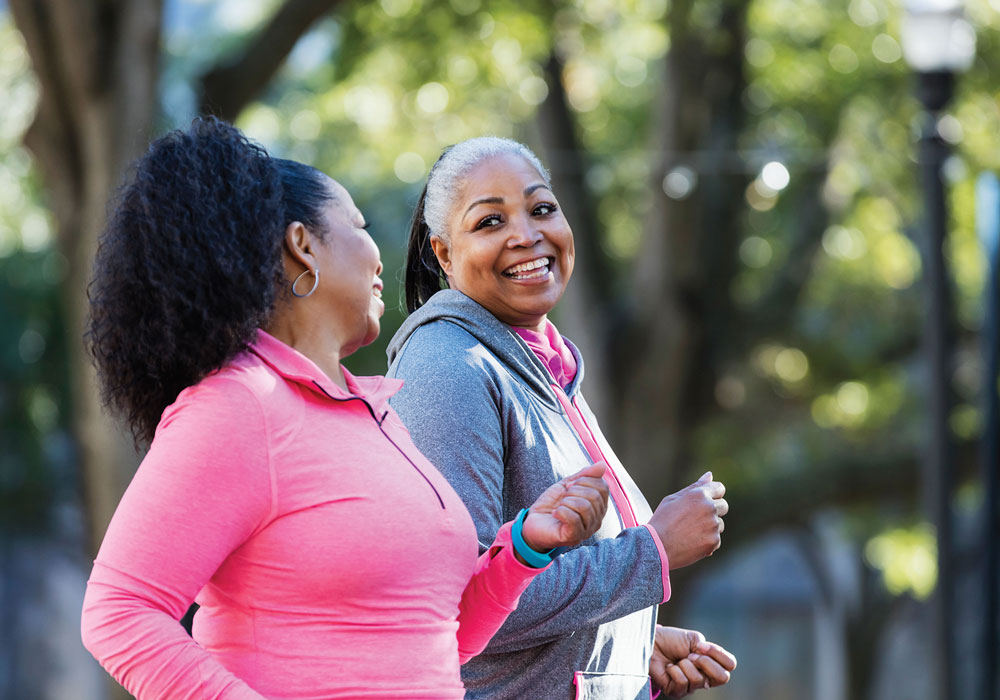By Judi Forner, DNP, ACNS-BC, APRN, RN-BC
As a clinical nurse specialist (CNS) with a cardiovascular background, I have seen the evidence-based benefits of exercise in a variety of settings. However, several years ago, when I was working as a CNS on an acute inpatient oncology unit, I noticed that exercise was not regularly included in care plans. As I learned from staff, this was done out of concern that patients needed to rest to save their energy.

Note. Based on information from Hilifiker et al., McCrary et al., Mustian et al., and Schwartz et al. Photo credit: iStock.
However, while I was studying for the ONS chemotherapy immunotherapy certificate, I learned that ONS’s symptom interventions and guidelines and other evidence-based programs support exercise because it has been proven to reduce:
- Symptoms like cancer-related fatigue
- Treatment side effects
- Chemotherapy-induced peripheral neuropathy in cancer survivors
- Recurrence and mortality rates for many common cancers
- Regular activity can also help patients maintain their exercise tolerance.
Thinking on Our Toes
With the support of some of the faculty at the nursing college I was attending, my team and I developed a proposal to integrate the ONS Get Up, Get Moving exercise intervention into clinical care. When we presented the proposal to outpatient cancer center leadership, we received overwhelming support with one caveat: because of short staffing and time constraints, staff nurses could not be involved in recruitment or patient education.
As a work-around, I met with the nurse navigators at the clinic and asked for their help recruiting patients and supporting the program. The navigators enthusiastically joined us, and my team gave them information on our study, recruitment materials, and their own activity tracker so they would feel comfortable answering questions about its use.
If a patient was interested in participating, they were then randomized into the standard of care or the intervention and given an activity tracker to help them monitor their daily steps. To cover the cost of the activity trackers, which was the only expense for the program, we received a small grant from our medical center’s foundation.
The COVID-19 coronavirus pandemic had a major impact on recruitment and face-to-face patient instruction. As in most places around the country, people were not adhering to recommended cancer and health screenings. Patient census at our cancer center dropped drastically, which slowed recruitment.
We shared these concerns with navigators and met with oncologists at the cancer center who recommended expanding our inclusion criteria from patients with breast cancer to those with prostate and colon cancers as well. We also shifted our face-to-face consenting and patient education to phone conversations and mail service. Because the intervention was developed to be home-based already, it was perfectly adaptable to quarantines, thus limiting exposure risks for immunocompromised patients.
Study participants consented, completed the surveys, and were asked about their exercise habits all over the phone. We conducted weekly calls lasting 2–15 minutes for 12 weeks to review their activity levels. Aside from collecting information, the calls allowed nurses to provide support for patients undergoing chemotherapy and other treatments and validated their varying amounts of energy each week. They encouraged all patients’ activity, whether it was just walking to the mailbox or going on hikes.
We reported the positive results of our study to our center’s leadership. Our program can easily be incorporated into the oncology office and treatment setting while supporting an evidence-based quality improvement program. Another student will soon be extending and refining the practice change we initiated.
As all nurses know, a caring constitution and wellness education are the bricks and mortar of our profession. Assessing and encouraging exercise should be as routine as measuring vital signs, weight, and pain level.
Editor’s note: The author thanks Matthew Dalstrom, PhD, MPH, and Andrea Doughty, PhD, for their assistance with the article.






